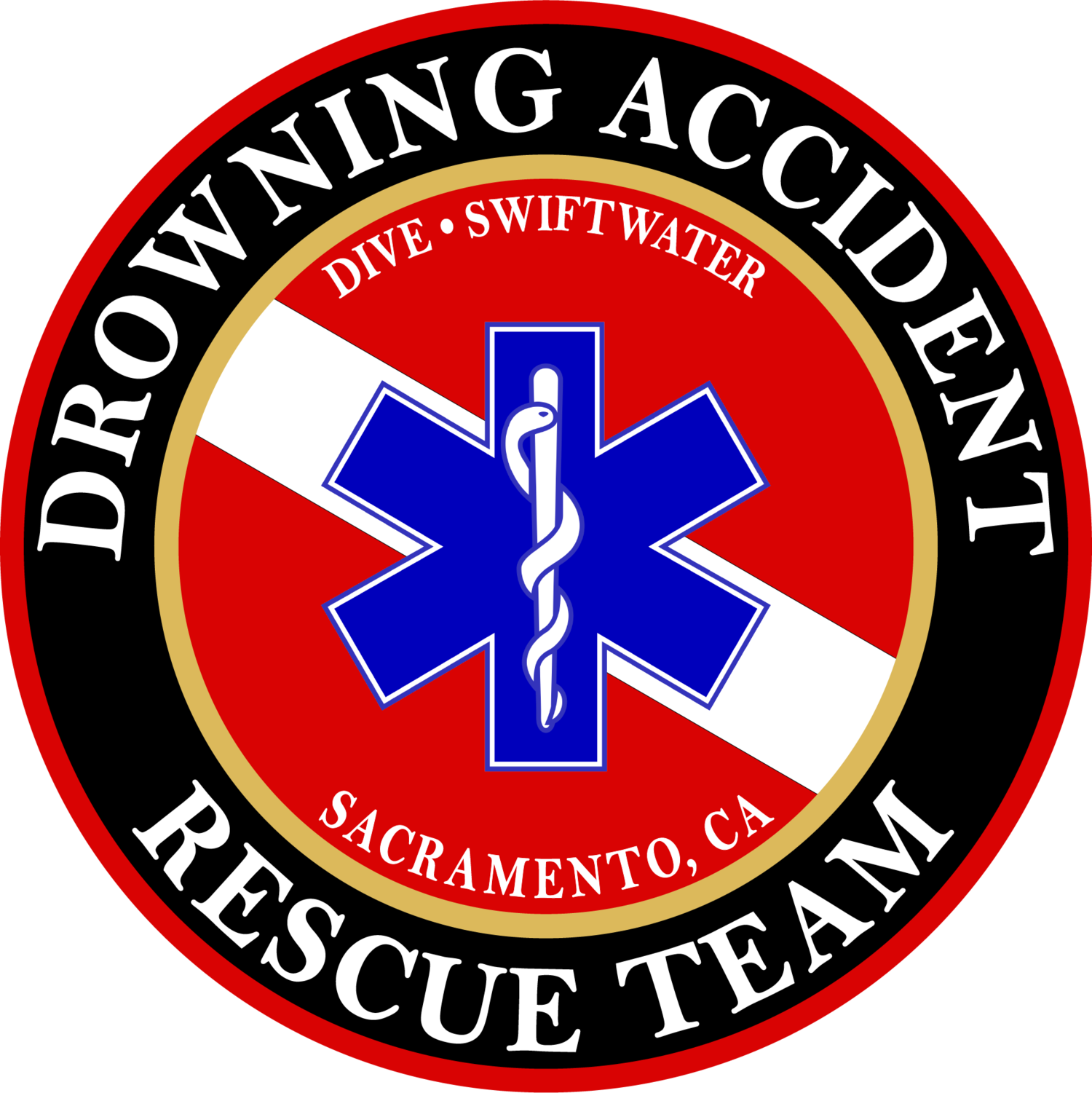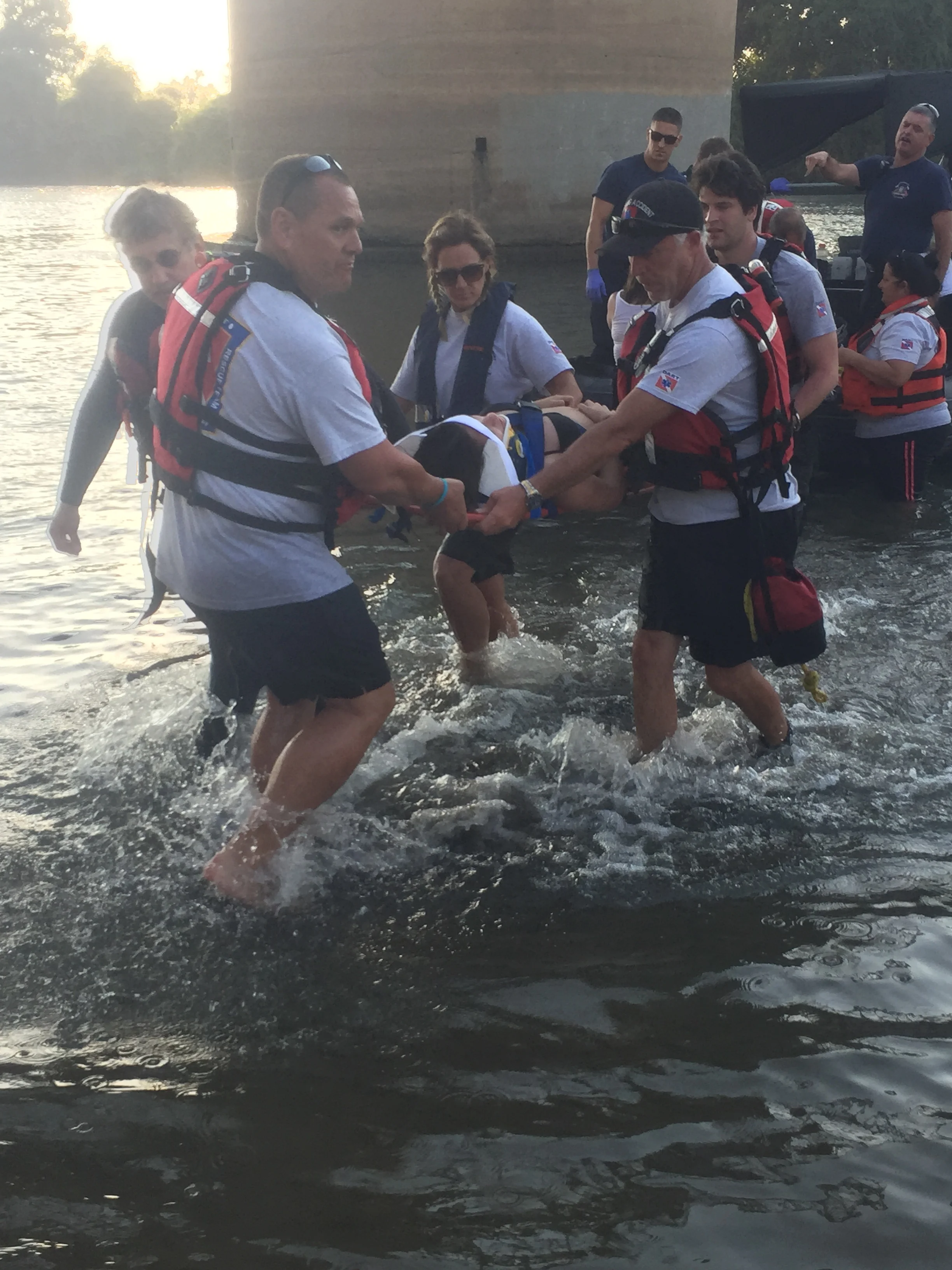Rescue & Recovery
The Rescue Call Mode is used when there is a chance to save a human life. Brief witness interviews, last seen point, search patterns, the golden hour, risk/benefit factor, and gathering basic information highlight this event.
The Recovery Call Mode is used without the goal of saving a human life. A slower pace, the gathering, documenting, and preservation of evidence, the witness interviews, follow-ups, and the risk/benefit factor highlight this event.
DART Responds to all calls in Rescue Mode unless reduced by a Team Leader, Operations, or Dispatch. Rescue Mode means our responding emergency vehicles operate with lights and sirens, also known as Code 3. If DART is responding to a call in Recovery Mode, our vehicles and personel will respond as quickly as possible but will do so without lights and sirens, Code 2.
To illustrate the process, let us examine a potential scenario for a drowning:
A seventeen year old male is with four of his friends at the river. They decide to dive off of a bridge and swim to an island that is downstream from the bridge in the middle of the river. The distance to the island is approximately 300 yards.
The five friends dive into the river and start swimming toward the island. What began as a fun swim to the island quickly turns into a race. With two hundred yards to the island still to go, our subject is tiring rapidly. His friends have left him behind, and he expends additional energy trying to catch up.
One hundred and fifty yards from the island he stops to catch his breath, treading water while he watches his friends swimming away from him. He is still closer to his friends than he is to the shore of the river, so he resumes his attempt to catch up to them.
One hundred yards from the island he is concentrating more and more on his tired arms and legs. Most of his energy is being used to keep afloat with his head above water and less is being used to swim towards the island. His breathing comes in short and irregular gasps. He takes a small amount of water into his mouth and he coughs. All his concentration is focused on breathing and keeping his head above water. He never thinks to call for help.
He flounders for only a few seconds before more water enters his mouth and throat. He begins to cough violently, fighting to keep his head above water. As he coughs, he expels more and more air from his lungs and his breathing becomes shallow, rapid and less efficient. With less air in his lungs, he is less buoyant. Keeping his head above water becomes more difficult. Lactic acids begin to build in his muscles.
He slips below the surface of the water. Sinking slowly, he loses his ability to hold his breath and carbon dioxide buildup forces his diaphragm to contract uncontrollably. A deep inspiration of water occurs. He now has little or no buoyancy in his lungs and he sinks faster. The water in his lungs allows the carbon dioxide in his blood to leave quickly through the alveolar bed, satisfying his urgent need to breathe. Without oxygen being supplied by the lungs, his blood undergoes a drastic change in chemistry. He may experience the effects of the “Mammalian Dive Reflex”, his body shunting blood away from his arms and legs and into is internal organs.
As his desire to breathe comes back under control, drowning loses its horror and he sinks faster, not realizing he is quickly losing all voluntary muscle control. In his dazed state he may not feel the affects of the water pressure on his body. He reaches the bottom and as he becomes unconscious, he instinctively grasps at it.
As instinct takes over, he breathes in deeply and forcefully. His breathing may continue for a time, with large quantities of water and silt entering his lungs. He may vomit and then inhale some of the contents into his lungs. The forceful inspiration of water into his lungs may rupture alveoli, allowing the water to enter directly into the blood stream while his heart is still beating. Blood may enter the lungs. His heart stops.
Meanwhile his friends have reached the island and looking back, cannot see him. They yell out his name, but get no response. They swim to the shore of the river and run back towards the bridge looking for him. Unable to find any signs of their friend, they activate 911. Within 35 minutes of our subject slipping beneath the water, the dive rescue team arrives on scene.
The dive team’s duty officer locates the witnesses and has them take him to the “last seen point “, in this case, the location on the bridge where they entered the water. Meanwhile, divers are suiting up with the assistance of shore support. Since there is no last seen point other than the bridge, a search with divers behind a boat is started at the island, moving towards the point on the bridge that the group dove into the river from.
The water temperature is 56 degrees. Less than an hour has passed since the five friends dove into the water. The dive team is still operating within the “Golden Hour” or in “rescue mode”. The entire team feels an urgent need to find the boy quickly because there is still a chance to save his life.
Rescue
Fifty five minutes have passed since the five friends dove into the water. One of the divers signals that he has a find. The diver surfaces with the victim and the boat crew pulls them both on board the boat. The divers caution the boat crew to be gentle with the victim. A paramedic who is trained in cold water near drownings takes a few seconds to suction clear the victims mouth and airway. He then ventilates the diver using oxygen that has been prewarmed in hot water. CPR is started. As others move to help, they cover the victim with blankets and start to rub his arms and legs. The paramedic directs them to stop. He tells them that the boy must be rewarmed slowly, from the inside out. They arrive at the shore and the boy is transferred to an ambulance.
Recovery
An hour and fifteen minutes after the victim and his friends dove off of the bridge, the Team Leader pulls up his divers to check their air and replace divers that may be tiring. He tells his divers that they are now outside of the golden hour. He directs shore support to contact fire dispatch and reduce the call to “recovery mode”. Anyone that is still responding to the call will now slow their pace. The dive team still desperately wants to find the boy for his family and friends sake, but there is less of an urgency now. Safety is increased as the urgency diminishes. The search resumes. Two hours after the boys entered the water, a diver signals a find. The diver surfaces, leaving the victim underwater. He is pulled to the side of the boat that is away from onlookers. A body bag is lowered over the side and the boy is placed inside, the diver clears the area as the boy is pulled from the river. The boat then motors down to a nearby marina where a coroner can look at the body before the family arrives.

